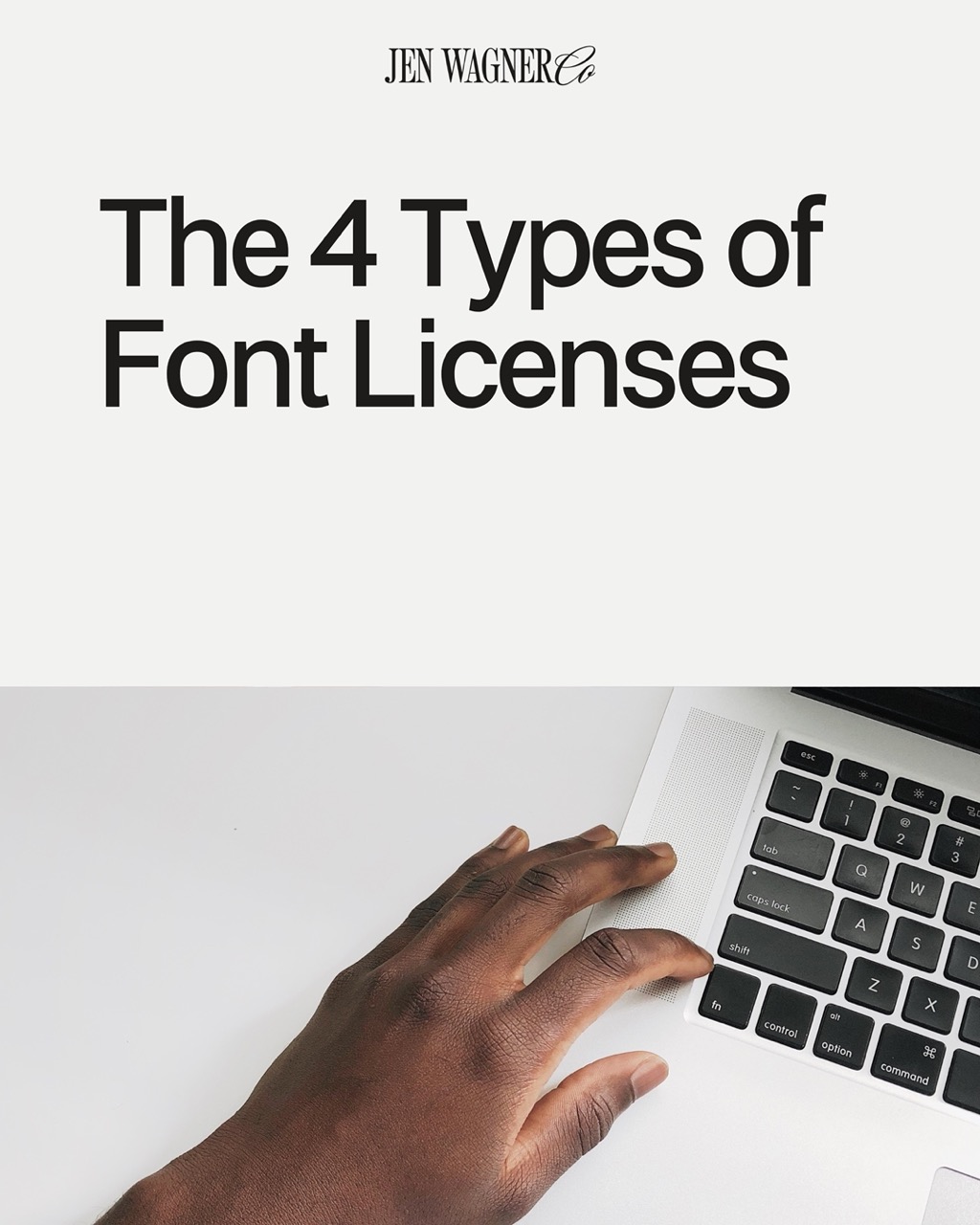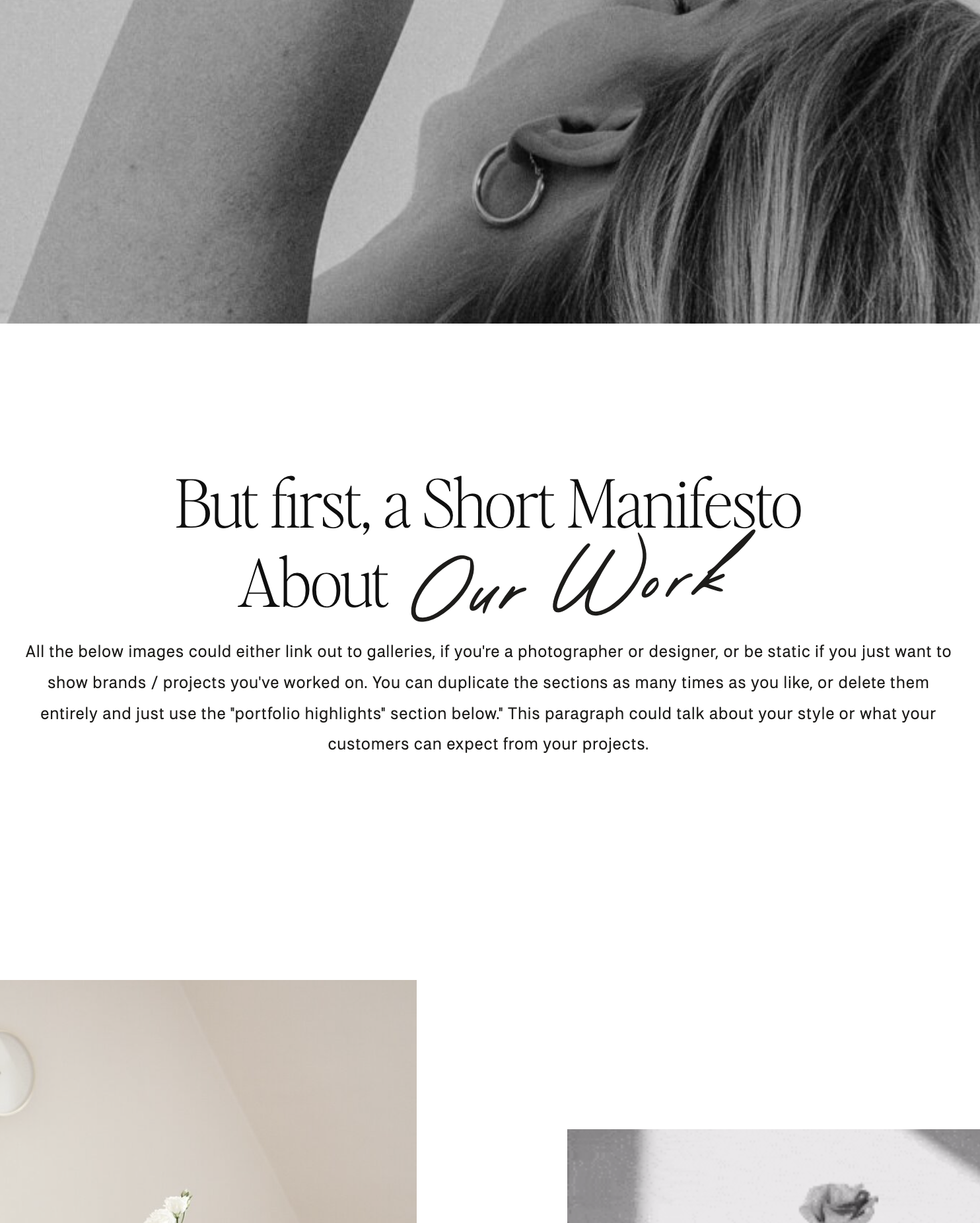Purchasing a font can be fun, but understanding the licensing is not. It can be confusing and overwhelming to understand which license you need to purchase based on your needs. Licensing is complex and can be different from foundry to foundry, so always read the full license terms if things are confusing. Here is an overview of the different licenses and the most FAQ on font licensing!
The 4 Types of Font Licenses
Web
This is the most common license, and it allows you to use fonts on your website. The fonts can be used in any way you see fit—you don’t have to limit yourself or pay for any extra features. The licensed font can appear on multiple websites owned or controlled by the Licensee (i.e. you have a WordPress blog and a ShowIt website). Pageview limit agreed upon at checkout. Does not work for template sales.
Desktop
These are a little more expensive, but they’re perfect for desktop software like Photoshop or Illustrator. You can use them on as many computers as you want. The licensed font can appear in unlimited commercial and personal projects including, but not limited to, physical end products, social media, packaging, paid ads, logos and branding, desktop programs, Canva, printables, etc. Not for print-on-demand applications.
e-Pub
These are great if you’re working with e-books or other digital documents that require fonts. The licensed font can appear in one title, but there is no limit to how many times that title can be sold. Any additional titles will need additional licenses. Not for print-on-demand applications.
Server
These licenses allow you to install the fonts on a server, so they can be accessed by multiple people at once (like those who work at an office). The licensed font can be included in ONE Canva, ShowIt, Corjl, Templett, and other template for sale (one product per license). Under no circumstances can the font files be extractable or included in the download.
Font Licensing FAQ
What licenses are needed to use a certain font on printed products that would then be sold?
Generally, if it’s something you’re designing and cannot be customized by the customer or another user, a Desktop license will cover you. If any control over the font or words leaves your own desktop, you’ll usually need a custom license. So if someone can download your stationery and input their own names, dates, etc. in the font, you’d need a custom license – Desktop won’t cover that. That basically gives them the benefits of using the font without licensing it themselves, and that’s a no-no. But if the words on the stationery don’t change and are rasterized images (ie “the wedding of”), then a Desktop license is usually good.
If I’m using the typeface for my website and print, do I need two licenses?
Yep! If the font is used for any Desktop programs (or Desktop-like programs, like Canva), you’ll need a Desktop license. If the font is embedded on your site (for headers, body copy, etc.), you’ll need a Web license. You don’t need a web license if you’re only using rasterized images of the font on your site (like your logo).
As a web designer, do you need a separate license for each client?
Yep! Different foundries have different rules, but generally, you’ll need a license for each client.
An exception could be if you are the one hosting your client’s websites (i.e. they’re all under your Squarespace account, and you’re the one going in and making changes to them). In that case, you’d still need a license that covers the traffic for every site using the fonts (5 sites at 10k views/mo means you’d need a 100k views/mo license, or whatever level is above the 10k). This is the case for Creative Market’s web licensing. This exception does not apply to Showit templates. This exception does not apply to Showit templates. ICYMI: This exception does not apply to Showit templates.
How do font licenses work for ShowIt templates? Who buys – the designer or the client?
Oooo this is a tricky and controversial one! It’s going to differ from foundry to foundry, but here’s a general rule of thumb. If you are putting the font into a template that can be edited by someone other than yourself, you need a custom license. At Jen Wagner Co., you can purchase a Server license directly through me if you want to use any of my fonts for your Showit (or other editable) templates.
As far as who pays, that is also tricky. There are a lot of Showit template designers who use fonts for promotional/demonstration purposes only and do not include them in the templates. In that case, the client purchases the appropriate license separately. There are, however, many designers who would rather include the fonts in the template so the client doesn’t have to purchase something else. In this case, the designer pays (and would purchase a custom license directly from the foundry).
As the website grows with more traffic or if I’d like to put out a product, what do you recommend?
Most of the time you’ll just need to go back to the foundry and purchase the appropriate license (so if you bought a 10k visits/mo Web license and your site grows beyond that, you’d go back and purchase the next level up). You might be able to get an upgrade discount depending on the foundry it doesn’t hurt to ask! If you want to create products but only have a web license, you’ll need to purchase a Desktop license.
What about using a font in a shared google doc (to match branding)? Would that be covered by a desktop license, a web font license, or a custom one?
You actually can only use Google Fonts in Google Docs, so you’re not able to upload custom fonts. If the only way to get the font in the Google doc would be to rasterize it as an image (like your logo), it would remain uneditable and you’d just need a Desktop license.
Are you still unsure about the licensing that you need? Take my 60-second quiz to get your custom-recommended license for your needs! (Note: Based on your project, you may need two different licenses so keep in mind you may have to take the quiz twice depending on your needs!)






Comments +